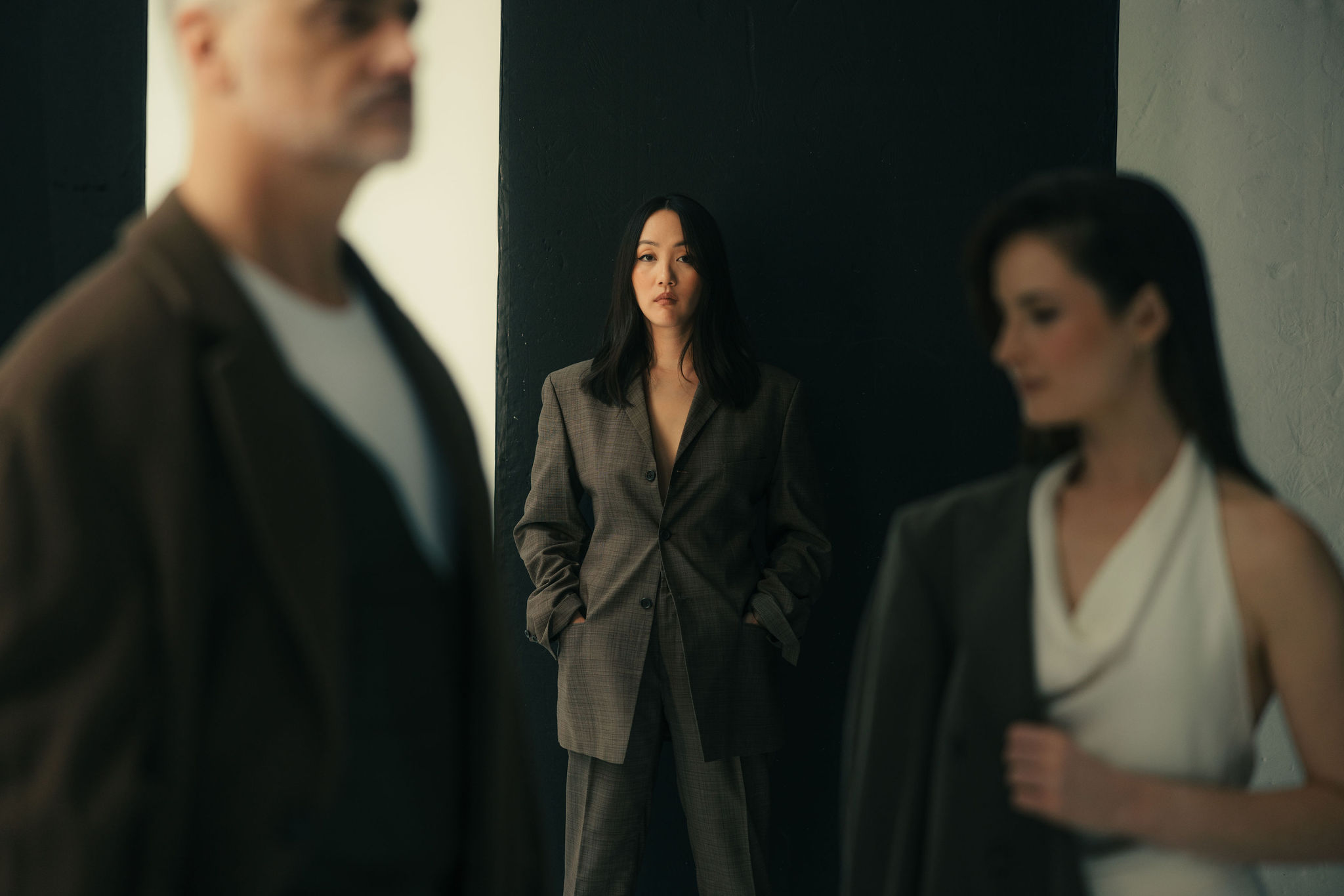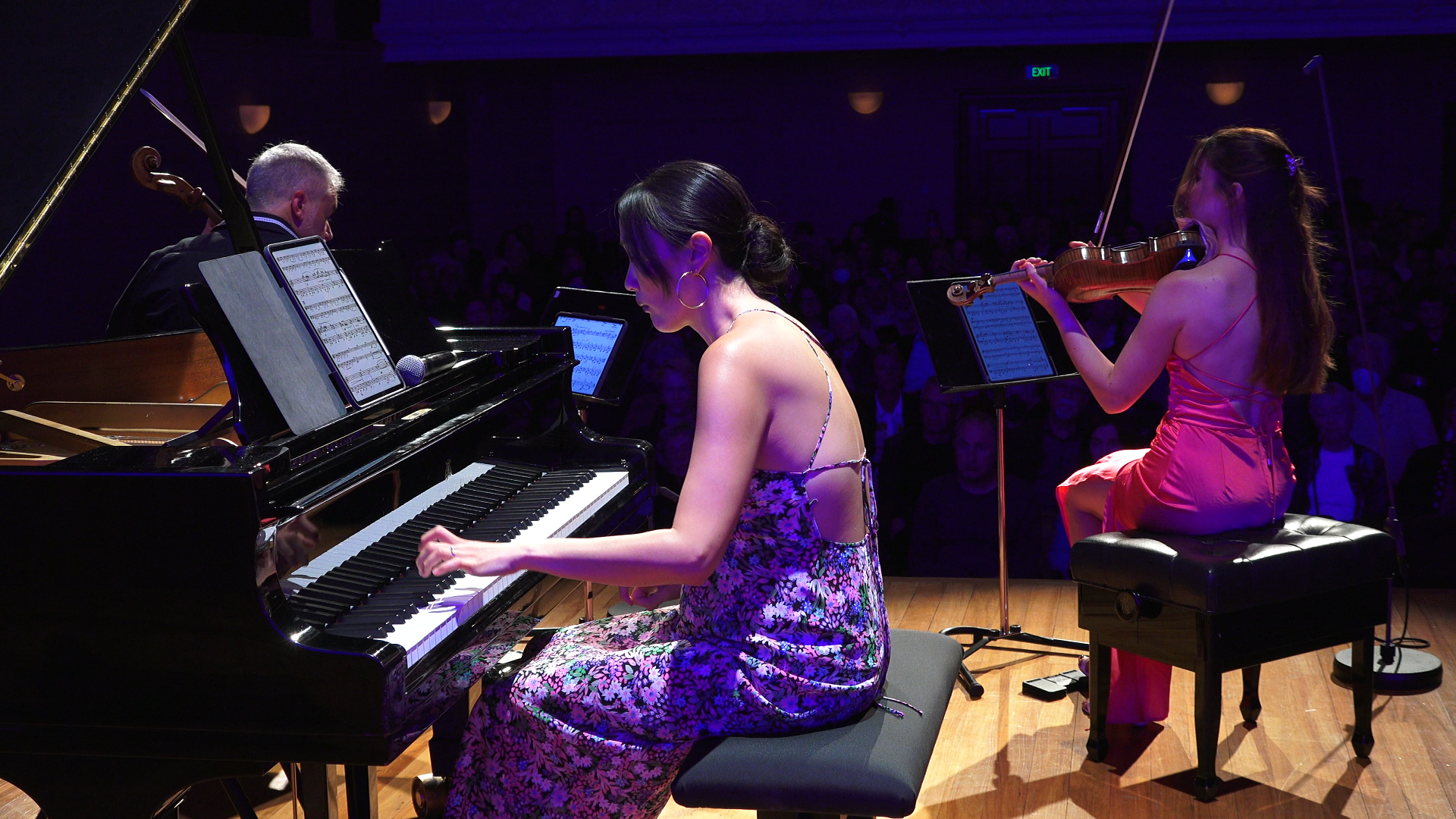. . .Spellbinding from start to finish, the mix of western instruments with Maori was beautifully crafted. . .I marvel at the subtle changes to technique each player makes to make their western instruments sound more Asian folk than European classical. It is through their skillful use of articulation, vibrato and bowing that changes the tone completely. . .By the end of the show there was no doubt we had witnessed some of NZ’s greatest composers and performers at the top of their game. The integrity and skill of both composers and performers was highly admirable, the music fresh and original, and for me, the show was the highlight of the festival.
Claire Cowan – The Big Idea, 27 March 2013
I’m a completely biased fan of these three musicians. Biased because I’ve had the pleasure of working with them before, and have spent the last month writing a new work for them. But nonetheless, I’m going to spend the next few paragraphs singing their praises for their last concert – Convergence, featuring two NZ works for trio and Taonga Puoro (Maori instruments), and two other works by contemporary composers with distinctly cultural/folk inspired sounds.
The show was performed at the Town Hall Concert Chamber on the last night of the festival, which was theatrically lit with a wash of vibrant color on the back wall. The performers were in semi-darkness and had music stand lamps. I appreciate the effort they made to address visual aspect of their performance, too often overlooked by classical performers. It helped add to the mood and magic of the sounds they created.
As the performers entered the stage, pianist Sarah Watkins helped a frail Richard Nunns (grandaddy and master of Taonga Puoro) onto the stage to loud applause. The program began with Gareth Farr’s re-worked Nga Kete e Toru, featuring an extra Taonga puoro player, Horomona Horo. Spellbinding from start to finish, the mix of western instruments with Maori was beautifully crafted – from delicate overtones and whistled notes from Richard’s flutes, to subtle pitch bending and gentle harmonics to compliment the unearthly tones of bone flutes, contrasted by rhythmical outbursts from the trio in typical Farr manner.
The next two works on the program from Gao Ping Four sketches and Chen Yi Tibetan tunes. Both of Chinese descent, evoked vivid and lush soundscapes of their native China. Instantly we were transported to the composer’s homeland, where we heard evocations of Chinese folk instruments, busy market places, and ethereal cloudscapes (in a beautiful movement of Gao’s using only harmonics.) I marvel at the subtle changes to technique each player makes to make their western instruments sound more Asian folk than European classical. It is through their skillful use of articulation, vibrato and bowing that changes the tone completely.
The last work on the program, the world premiere of commissioned Victoria Kelly’s Toi Huawera (Suspended Way) was preceded by an insightful video documentary of the trio rehearsing and collaborating with the composer. We gained an insight into her compositional process and the themes and concept behind the finished work. Based on a myth invented by the composer, the structure of the piece was decided by story rather than any sort of imposed musical structure. The piece began with a sort of Maori jaws harp – the player tapping on a stick half held in the mouth and using the mouth as a resonator to change the pitch. The trio joined in with woody sounds, col legno (using the wood of the bow rather than the hair.)
Horomona Horo was fascinating to watch and a skillful musician and performer who seemed very comfortable on stage. The trio imitated and blended in with the Maori instruments, whooping cello pizzicato like a bull-roarer, then husky and low like a blown gourd. As Victoria explained in the video documentary, every sound created on every instrument has a meaning associated with a character from the myth she created. And at the core of the myth is a love story, and an appreciation for our Whakapapa which she thinks of as ‘pathways that lead everyone and everything back to the place where we all began.” The title is elaborated on with this description “A way to reach the highest level of heaven – sometimes described as a web that hangs down from the heavens..sometimes described as a whirlwind path.”
Applied musically, this is a rather beautiful metaphor. As the weaver of the web, Victoria created a rich and delicately complicated tapestry of sound. The ethereal piece had a deeply spiritual and profound appreciation for this concept at the heart of traditional Maori belief system – a system which Kelly notes, is found in western culture, but “articulated differently.” Her fascination with this mystery of life and death and ”Te Arai” (the veil that separates us from our ancestors) is an inspiring place for her to source her sound world. The Taonga Puoro themselves each uniquely possess a spiritual guardian and association with various Atua (Gods) of the materials from which they’re made. Being a non-Maori composer, Kelly sought advice and guidance from collaborator and Maori consultant Tim Worrall. It was refreshing to see such a strong, inspiring, and mutually respectful collaboration between all the artists of differing musical and cultural backgrounds. Sonically, it paid off.
The audience would have been spellbound throughout the 20 minute long work, had they not been sitting for an hour by this time, and were starting to get a bit restless. It would have been nice to experience this piece with the fresh ears it deserved. Nonetheless by the end of the show there was no doubt we had witnessed some of NZ’s greatest composers and performers at the top of their game. The integrity and skill of both composers and performers was highly admirable, the music fresh and original, and for me, the show was the highlight of the festival.
Claire Cowan – The Big Idea, 27 March 2013

